Stuffed pasta transforms ordinary meals into extraordinary culinary experiences. From traditional Italian classics to modern creative twists, these pasta pockets deliver bursts of flavor in every bite. Whether you’re a seasoned chef or cooking novice, these 17 stuffed pasta recipes will elevate your dinner table and impress even the pickiest eaters.
1. Ricotta and Spinach Ravioli
Nothing beats the classic combination of creamy ricotta and earthy spinach tucked inside delicate pasta pillows. The filling comes together in minutes—just mix drained spinach with smooth ricotta, a sprinkle of nutmeg, and freshly grated Parmesan.
Serve these heavenly pockets with melted butter and crispy sage leaves for a traditional approach, or ladle your favorite tomato sauce over them for a heartier meal. Making the pasta from scratch might seem intimidating, but store-bought wonton wrappers work surprisingly well as a shortcut!
Fun fact: This timeless recipe dates back to the 14th century in Italy, where it was considered a clever way to stretch expensive ingredients like cheese and meat.
2. Tortellini in Broth
Ring-shaped tortellini swimming in golden broth creates the ultimate comfort food experience. Legend claims these belly button-shaped pasta pieces were inspired by Venus’s navel! The traditional filling combines finely ground pork, prosciutto, mortadella, and Parmigiano-Reggiano.
The secret to this dish’s magic lies in the contrast between the rich, savory filling and the clear, restorative broth. Start with homemade chicken stock for the most authentic flavor, though a good quality store-bought version works in a pinch.
Most Italian families in Bologna serve this as a first course during holiday meals, particularly on Christmas. Each region has its own slight variation on the filling, making this dish a delicious history lesson.
3. Piedmontese Agnolotti del Plin
These tiny pinched pasta parcels showcase Northern Italian ingenuity at its finest. ‘Plin’ means ‘pinch’ in Piedmontese dialect, referring to the technique used to seal each pasta pocket. The traditional filling repurposes leftover roasted meats mixed with cabbage, creating a zero-waste masterpiece centuries before it became trendy.
The pasta dough should be rolled extremely thin, allowing the complex flavors of the filling to shine through. Serve them simply dressed with butter and sage or with the roasting juices from your meat.
Historically, these were made after Sunday roasts to use up remaining meat—an early example of resourceful cooking that transformed leftovers into something spectacular. Today, they remain a hallmark of Piedmontese cuisine.
4. Baked Cannelloni
Cannelloni transforms dinner into a special occasion with its impressive presentation and comforting flavors. These large pasta tubes cradle a velvety mixture of ricotta, spinach, and a hint of nutmeg, though meat-filled versions are equally delicious.
What makes this dish extraordinary is the double-sauce approach—creamy béchamel blankets the top while tomato sauce creates a flavorful foundation. The magic happens in the oven as the sauces bubble and merge, creating flavor-packed bites.
While traditional recipes call for making fresh pasta sheets and rolling them around the filling, dried cannelloni tubes save time without sacrificing taste. This dish originated in Emilia-Romagna but quickly spread throughout Italy because good ideas (and delicious pasta) can’t be contained!
5. Classic Meat Lasagna
While technically not ‘stuffed,’ lasagna creates the same delightful layered effect as its stuffed pasta cousins. The architecture of this dish is part of its genius—pasta sheets alternate with savory Bolognese ragù, creamy béchamel, and melted cheese to create a perfect bite every time.
The slow-simmered meat sauce develops deep flavors that permeate the entire dish. Let it rest for 15 minutes after baking for easier slicing and to allow the flavors to settle.
Ancient Romans ate early versions of lasagna, though without tomatoes (which hadn’t yet arrived from the Americas). Today’s version developed in Emilia-Romagna, particularly Bologna, where they still insist on green pasta sheets made with spinach—a colorful twist on the classic we know today.
6. Cheese-Stuffed Manicotti
Manicotti brings restaurant-quality elegance to home kitchens with minimal effort. These large pasta tubes eagerly await their filling of herb-flecked ricotta, often mixed with mozzarella and Parmesan for extra richness.
The filling technique makes all the difference—piping the cheese mixture with a pastry bag ensures even distribution and prevents frustrating breakage. Nestled in marinara sauce and topped with additional cheese, these tubes transform into bubbling vessels of comfort when baked.
This Italian-American creation became popular in the early 20th century when Italian immigrants adapted recipes from the old country using ingredients available in America. The name comes from the Italian word ‘manica’ meaning sleeve—an apt description for these cheese-filled delights that have become a staple at family gatherings.
7. Four Cheese Mezzelune
Half-moon shaped mezzelune deliver twice the excitement of regular ravioli with their distinctive shape and generous filling capacity. The quattro formaggi filling combines creamy ricotta, sharp Parmesan, pungent Gorgonzola, and nutty Fontina for an unforgettable flavor explosion.
Each cheese plays a crucial role in the harmony of the filling—ricotta provides the base, Parmesan adds saltiness, Gorgonzola brings bold character, and Fontina melts beautifully. A light sauce of butter and fresh herbs allows the complex cheese flavors to take center stage.
These elegant crescents originated in Northern Italy near the Alps, where dairy farming produces exceptional cheeses. The name ‘mezzelune’ means ‘half-moons’ in Italian, perfectly describing their distinctive shape that captures sauce in its gentle curve.
8. Jumbo Stuffed Shells
Giant pasta shells create perfect vessels for capturing delicious fillings and sauce in every bite. Their ridged exterior grips sauce while their curved shape cradles a generous amount of filling—typically a mixture of ricotta, spinach, and herbs, though meat variations abound.
The assembly resembles a treasure hunt as you nestle each filled shell into a bath of vibrant marinara. A blanket of mozzarella creates an irresistible golden crust when baked.
Conchiglioni (their Italian name) means ‘large shells,’ and while not as ancient as some pasta shapes, they’ve become particularly popular in Italian-American cuisine. Their generous size makes them perfect for feeding crowds, and their impressive appearance belies how simple they are to prepare—a weeknight dinner that masquerades as special occasion food!
9. Braised Beef Ravioli
Tender braised beef encased in pasta creates a luxurious dining experience worth the extra effort. The secret lies in the slow-cooked filling—beef simmered until fork-tender with aromatics, wine, and herbs creates depth of flavor that elevates this pasta beyond the ordinary.
Shredding the meat rather than grinding it preserves its distinctive texture, while a touch of the braising liquid incorporated into the filling ensures moisture and intensity. Simple brown butter or a spoonful of the reduced braising liquid makes the perfect accompaniment.
This dish exemplifies the Italian philosophy of transforming humble ingredients through time and technique. Traditionally served during special occasions and Sunday family gatherings, these ravioli turn economical cuts of meat into celebration-worthy bites that honor the principle of not wasting a single drop of flavor.
10. Sausage and Mushroom Saccottini
These ‘little purses’ of pasta gather at the top like miniature dumpling pouches, creating the perfect vessel for robust fillings. The combination of savory Italian sausage and earthy mushrooms creates a woodland-inspired filling that satisfies deeply.
Browning the sausage thoroughly develops a flavor foundation, while sautéed mushrooms add umami richness. A splash of white wine deglazes all those caramelized bits, concentrating the flavors before they’re tucked into pasta pockets.
Originating in Northern Italy where mushroom foraging is a beloved tradition, these pouches celebrate seasonal ingredients. The name ‘saccottini’ translates to ‘little sacks’ in Italian, aptly describing their gathered shape that efficiently captures sauce in every bite—making them both practical and beautiful, like the best Italian creations.
11. Butternut Squash Ravioli
Sweet meets savory in these autumnal ravioli that showcase the velvety texture of roasted squash. The filling combines butternut’s natural sweetness with savory notes from Parmesan, nutmeg, and a hint of amaretti cookies for an unexpected depth that keeps each bite interesting.
Brown butter and crispy sage create the quintessential sauce, with the nutty butter complementing the squash while crisp sage leaves add texture contrast. A sprinkle of crushed amaretti cookies or toasted walnuts provides the perfect finishing touch.
This Renaissance-era recipe gained popularity in Northern Italian regions like Emilia-Romagna and Lombardy, where fall harvests yielded abundant squash. While butternut is most common today, any sweet winter squash works beautifully—making this a versatile recipe that adapts to what’s available at your market.
12. Pumpkin Cappellacci
Resembling little hats, these distinctive pasta shapes from Ferrara showcase sweet pumpkin filling in grand style. Their generous size allows for a substantial amount of filling in each bite, creating a perfect balance between pasta and filling.
The traditional mixture combines roasted pumpkin with crushed amaretti cookies, candied citrus, and mustard fruits (mostarda)—a fascinating sweet-savory-spicy combination that reflects Renaissance culinary traditions. Modern versions might simplify by using honey, nutmeg, and cinnamon to accent the pumpkin’s natural sweetness.
Dating back to the 16th century, cappellacci di zucca were served at the Este ducal court in Ferrara, where sweet-savory combinations were fashionable. The name comes from ‘cappello’ meaning hat, as they resemble the straw hats worn by local farmers—a pasta shape that tells the story of its region.
13. Beet and Goat Cheese Ravioli
Stunning magenta pasta encases a tangy goat cheese filling in this modern vegetarian masterpiece. The pasta dough gets its vibrant color from pureed roasted beets mixed directly into the flour and eggs, creating an Instagram-worthy presentation before you even add sauce.
The filling balances creamy goat cheese with a touch of ricotta for smoothness, while fresh herbs add brightness. A simple brown butter sauce allows both the color and flavor to shine, though a light cream sauce with a touch of horseradish makes an exciting alternative.
This contemporary creation demonstrates how traditional pasta techniques can embrace modern ingredients and aesthetics. The dramatic color comes naturally from beets—no food coloring needed—making this as wholesome as it is beautiful, perfect for special occasions when you want to impress without artificial ingredients.
14. Luxurious Lobster Ravioli
Chunks of sweet lobster meat nestled inside delicate pasta create an unforgettable special-occasion dish. The filling combines tender lobster with just enough ricotta to bind, while a touch of lemon zest brightens the mixture without overwhelming the star ingredient.
The sauce makes all the difference—a light tomato cream sauce infused with a splash of brandy perfectly complements the lobster’s natural sweetness. Some chefs incorporate finely chopped shallots and tarragon for a French-inspired twist on this Italian format.
While lobster ravioli represents a more contemporary addition to the stuffed pasta family, it follows the traditional Italian philosophy of letting exceptional ingredients shine through minimal intervention. Save those lobster shells to make a quick stock for your sauce—this extra step elevates the dish from excellent to extraordinary by intensifying the lobster flavor.
15. Crab-Stuffed Cannelloni
Sweet lump crabmeat transforms ordinary pasta into coastal elegance in this seafood variation. The delicate filling combines crab with just enough ricotta to bind, while lemon zest and chives add brightness without masking the seafood’s natural sweetness.
A light lemon cream sauce complements the filling perfectly, though a subtle tomato cream also works beautifully. The key to success lies in handling the crab gently to maintain those precious lumps rather than shredding them.
This dish bridges Italian pasta traditions with coastal seafood bounty, creating a perfect special occasion dinner. While not strictly traditional in Italy, it follows the Mediterranean principle of celebrating local ingredients—making it authentically regional wherever fresh crab is available. For the best flavor, splurge on fresh crab or high-quality pasteurized lump crabmeat rather than imitation products.
16. Mediterranean Spinach Feta Shells
Greek flavors meet Italian pasta in this Mediterranean mash-up that delivers bright, tangy flavors. The filling combines sautéed spinach with crumbled feta, creating pockets of melty goodness amid the leafy greens.
Lemon zest, dill, and mint add unexpected freshness, while a touch of nutmeg bridges the Greek-Italian flavor profiles. Instead of heavy tomato sauce, these shells shine with a light coating of olive oil, garlic, and cherry tomatoes quickly blistered in a hot pan.
This cross-cultural creation demonstrates how pasta serves as the perfect canvas for diverse flavor combinations. The briny feta provides all the saltiness needed, making this a lighter alternative to cheese-heavy stuffed pastas. For an extra Mediterranean touch, sprinkle with toasted pine nuts or a few kalamata olives before serving.
17. Short Rib Agnolotti with Truffle
Meltingly tender braised short ribs find their perfect home inside these elegant rectangular pasta parcels. The filling combines shredded short rib meat with its reduced cooking liquid, creating intensely flavored bites with minimal added ingredients.
A simple butter sauce allows the rich filling to take center stage, while shaved black truffle or a few drops of truffle oil adds luxurious earthiness. The pasta itself should be rolled extremely thin to create the perfect meat-to-pasta ratio in each bite.
This modern interpretation of filled pasta appears on high-end restaurant menus but can be recreated at home with some planning. The braise can be prepared days ahead, making final assembly more manageable. While undeniably indulgent, this dish follows the traditional Italian approach of transforming humble ingredients (tough meat cuts) into extraordinary meals through slow cooking and careful technique.
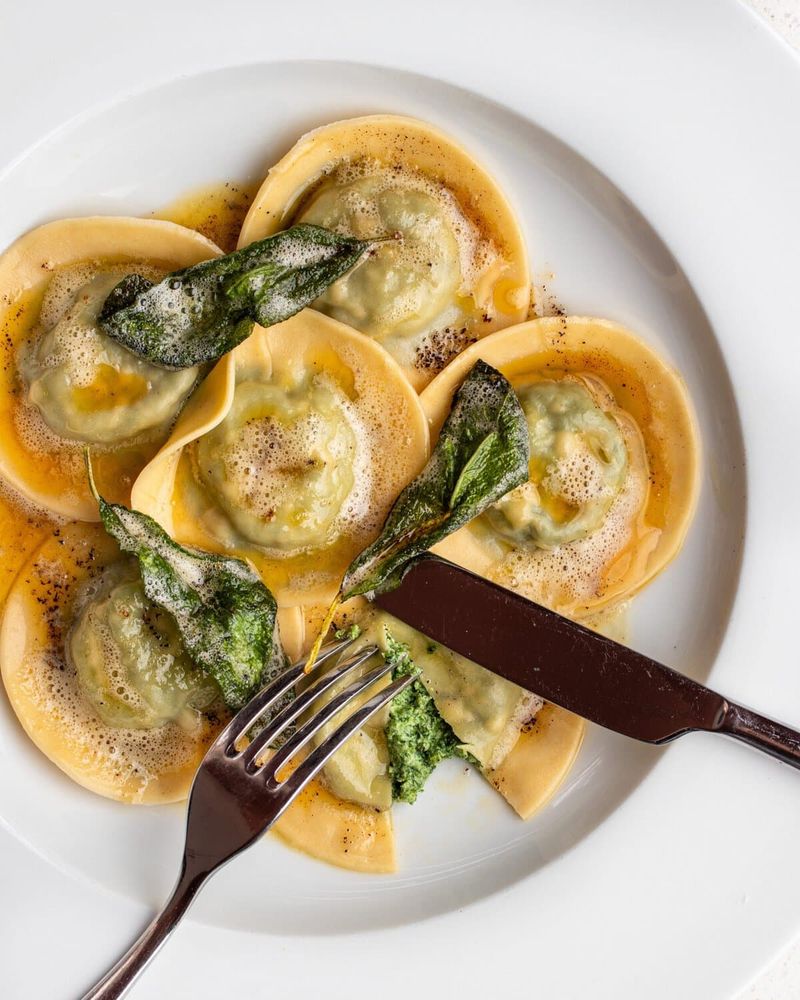
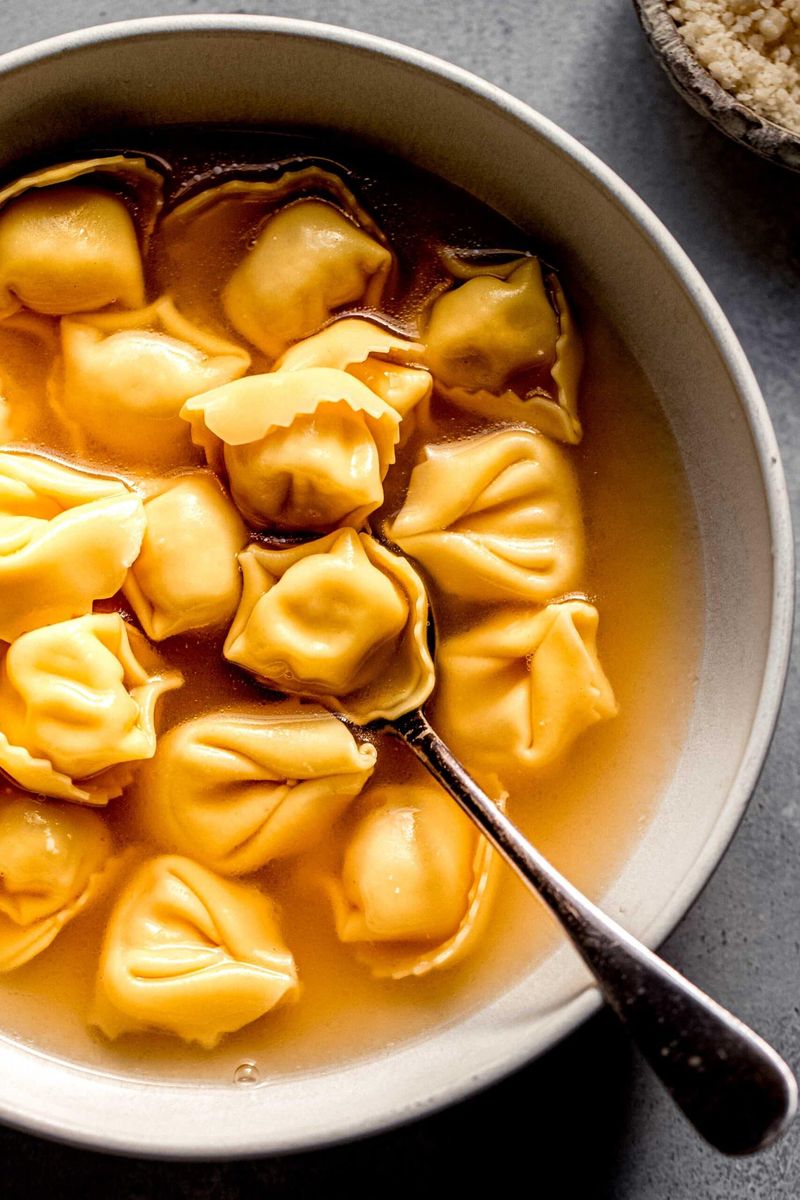
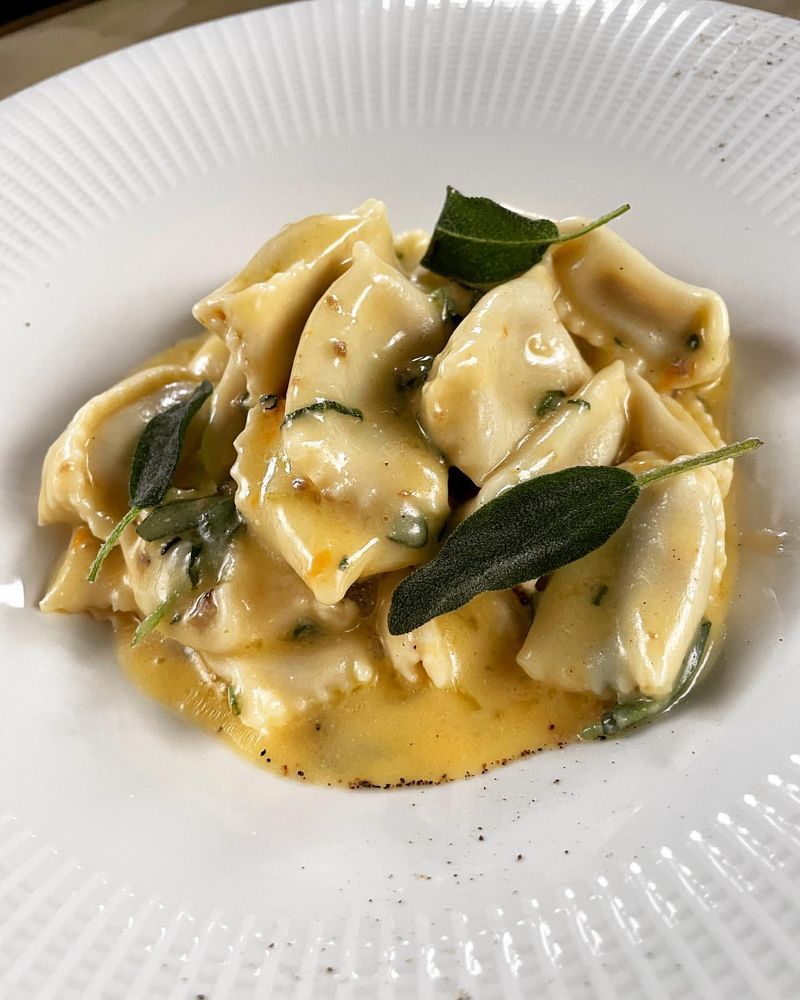
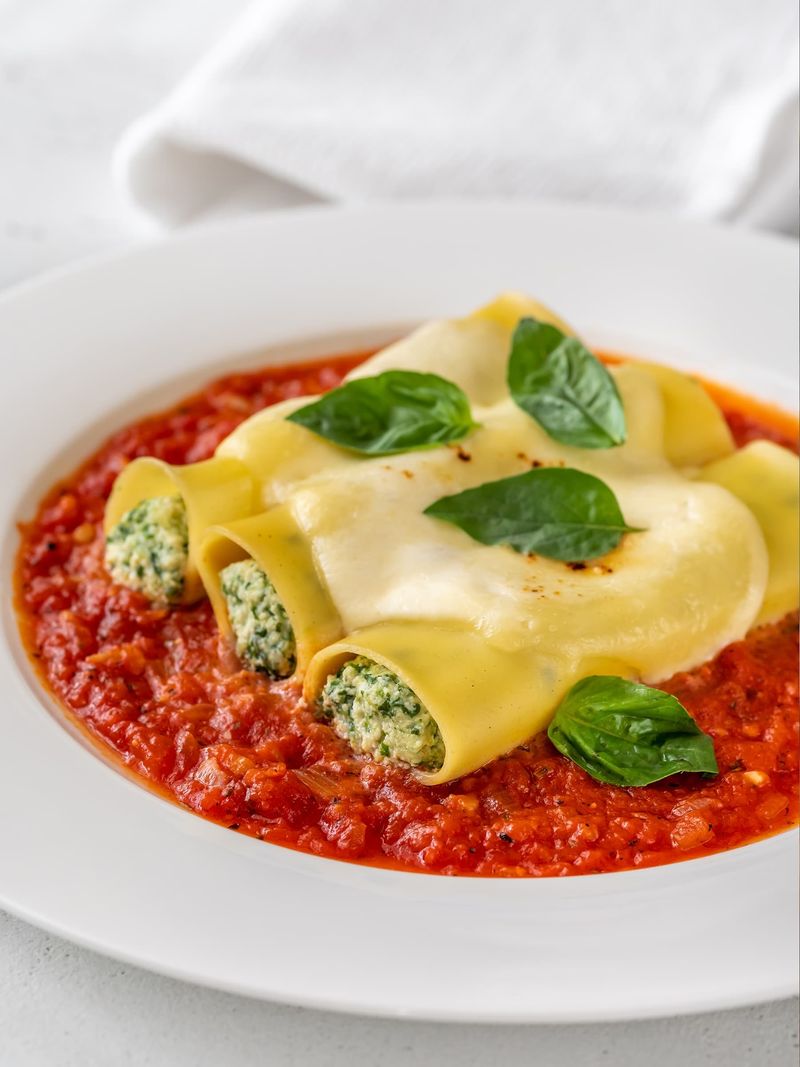
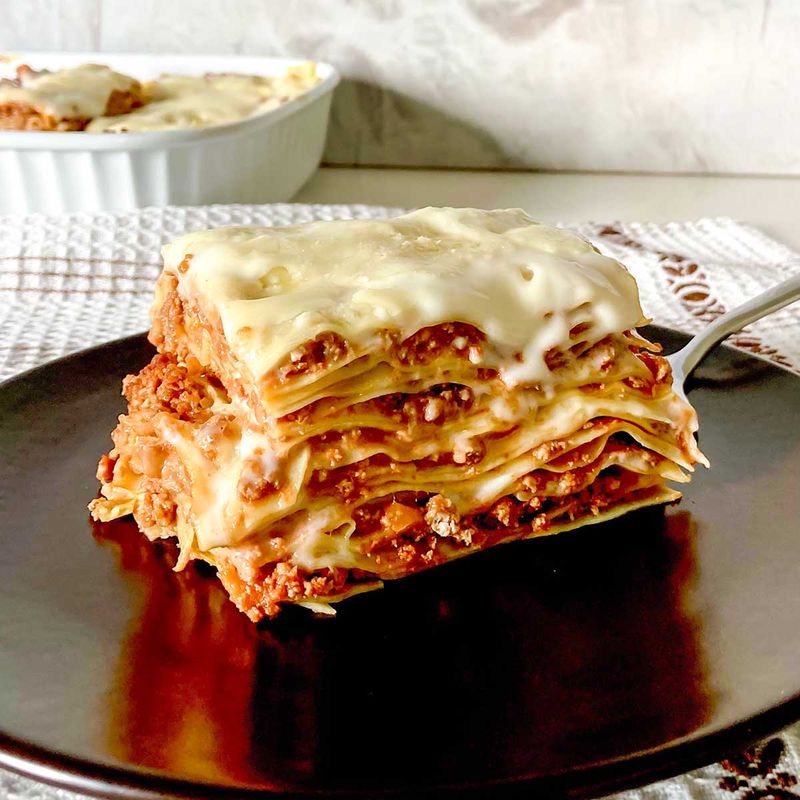
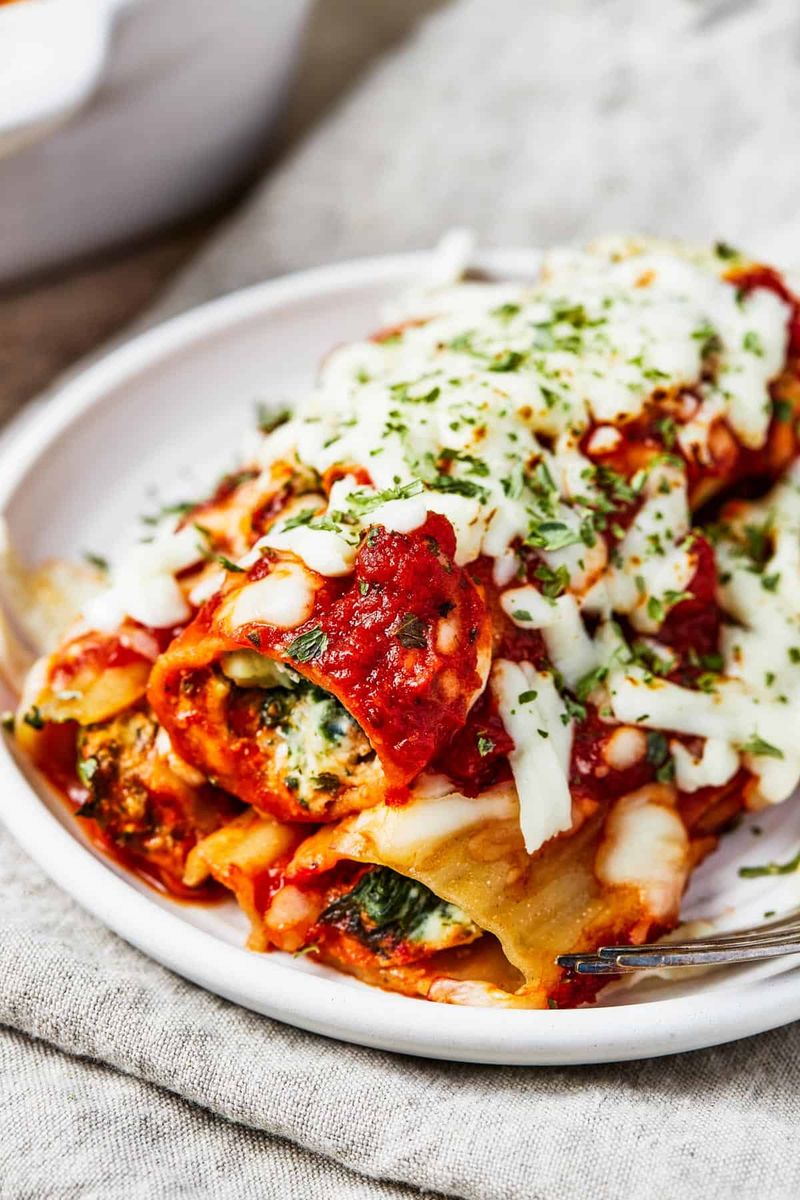
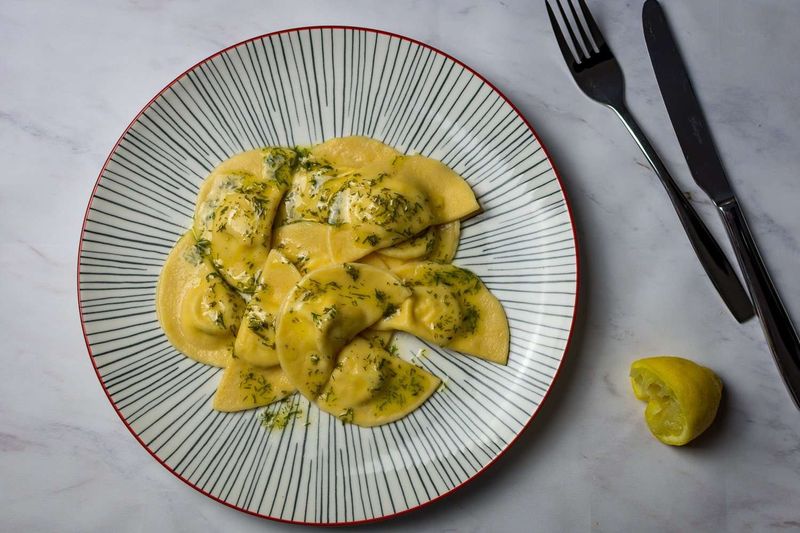
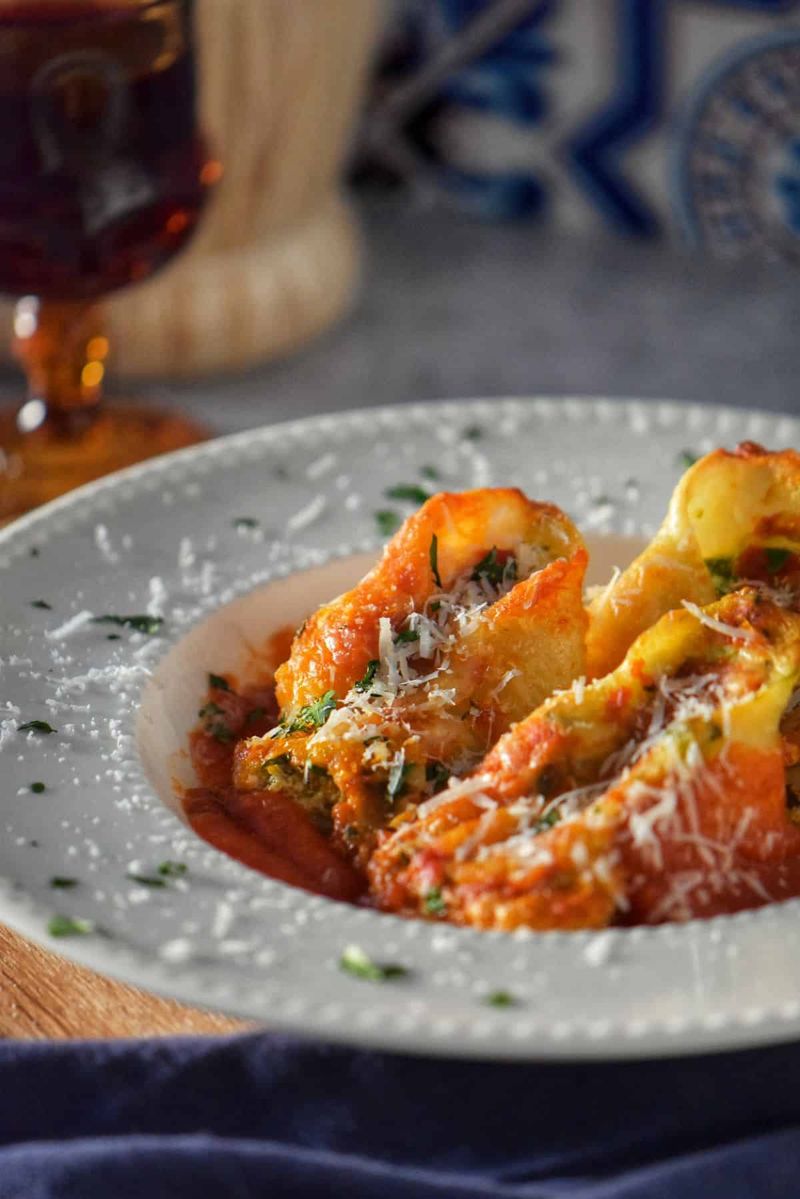
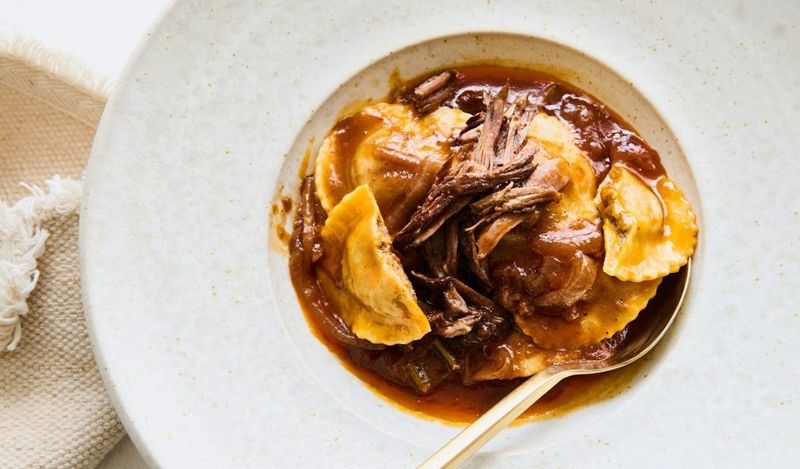
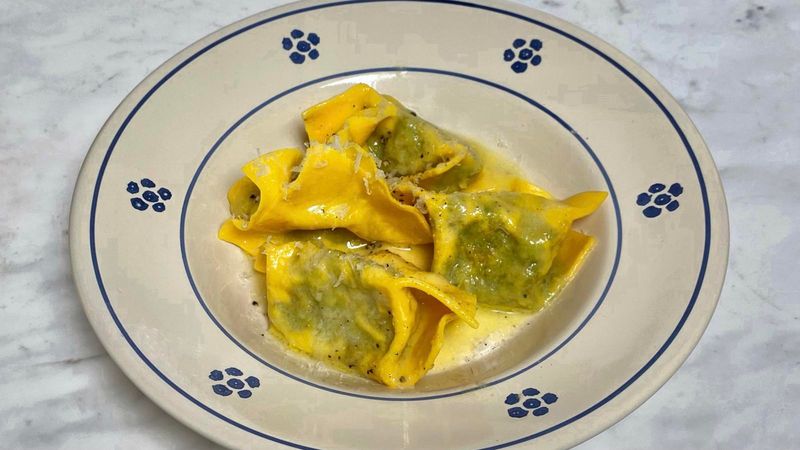
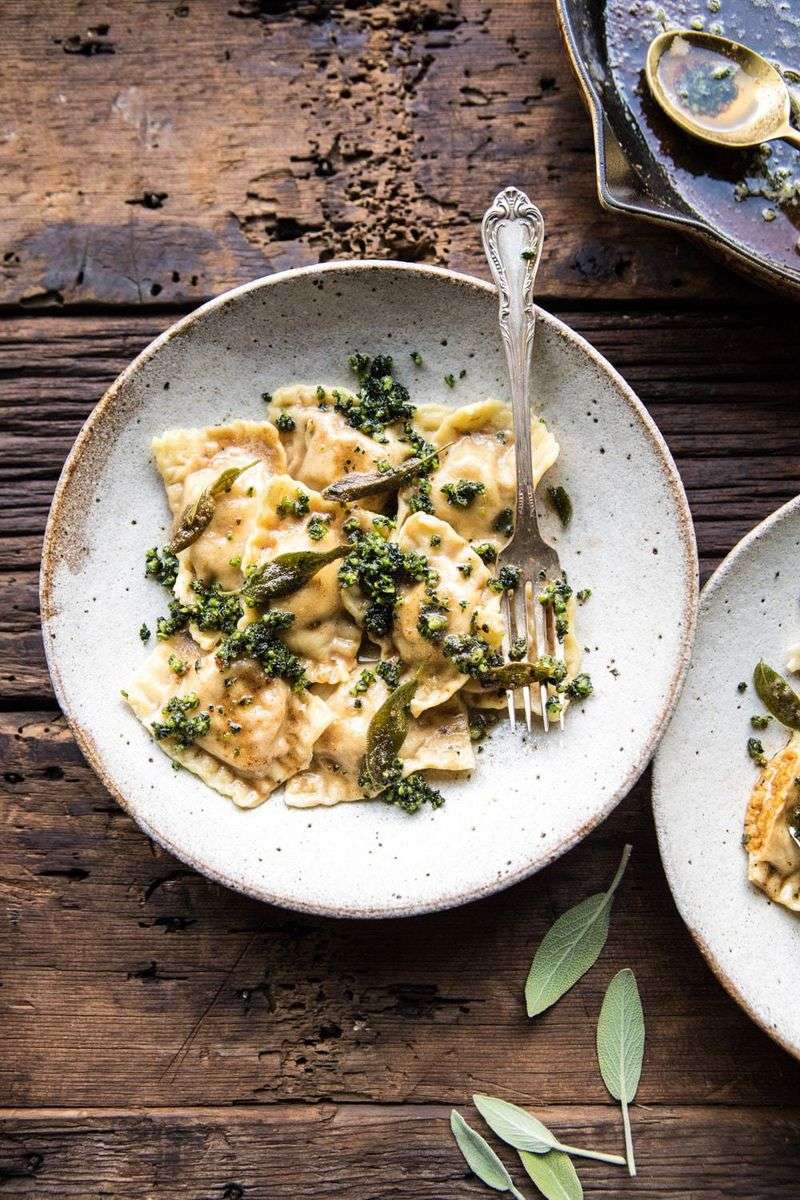
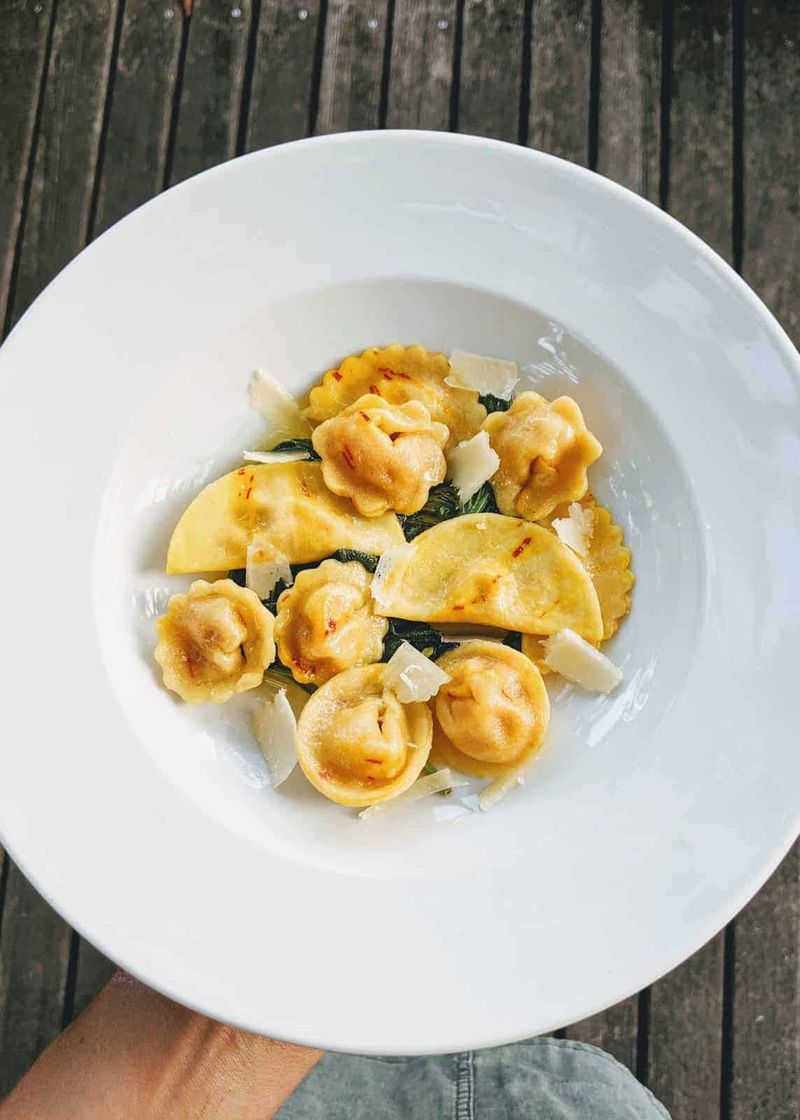
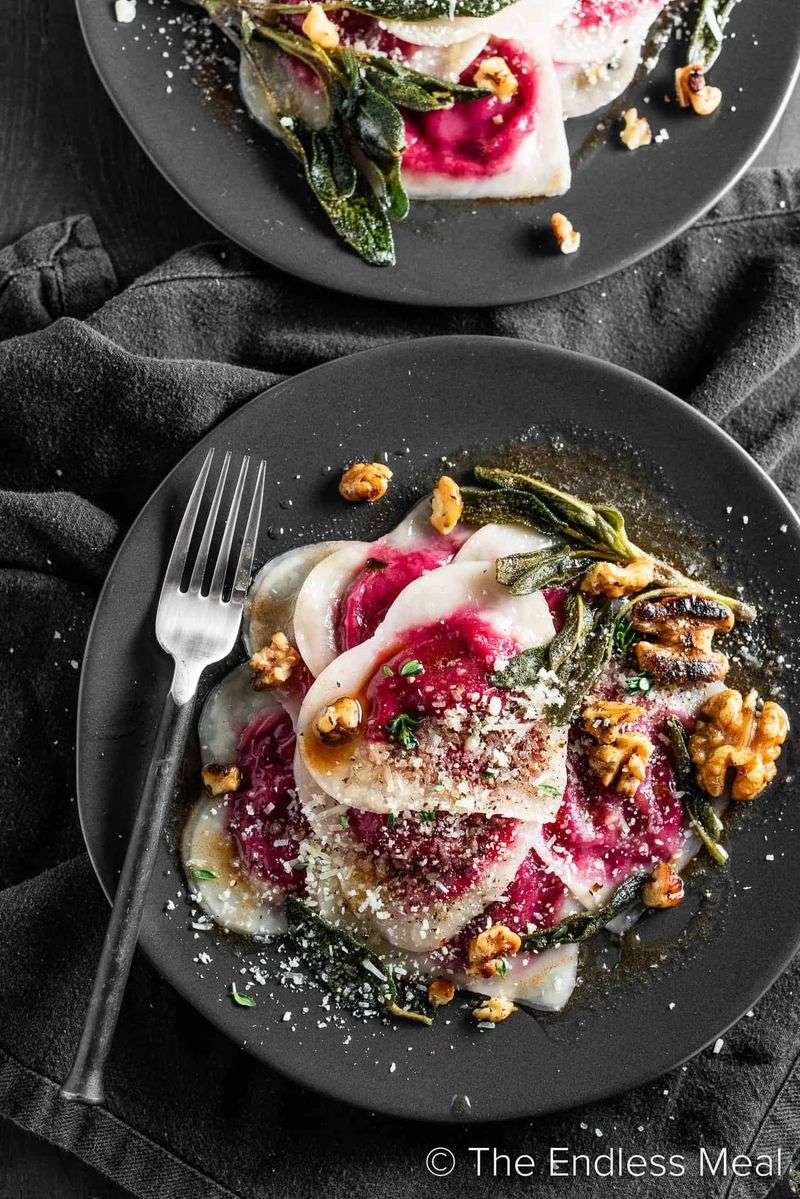
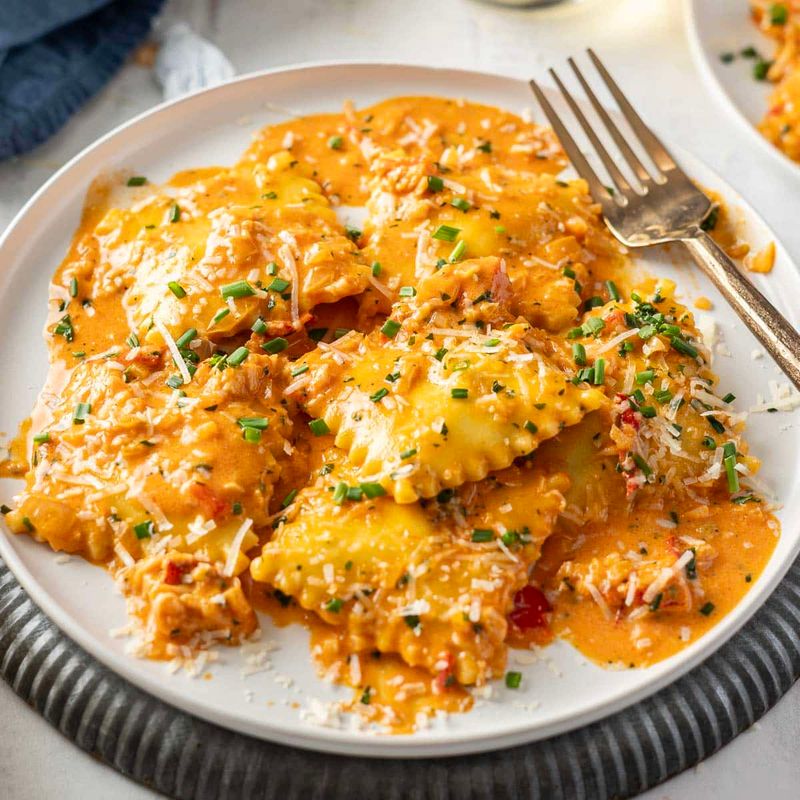
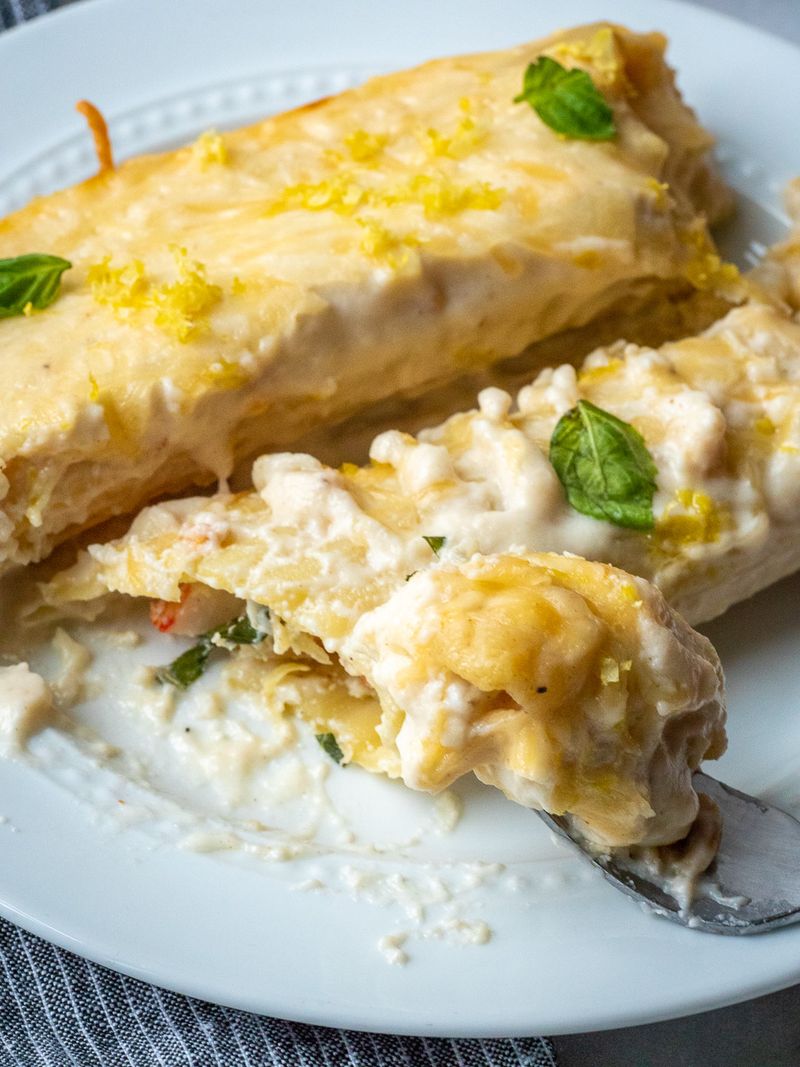
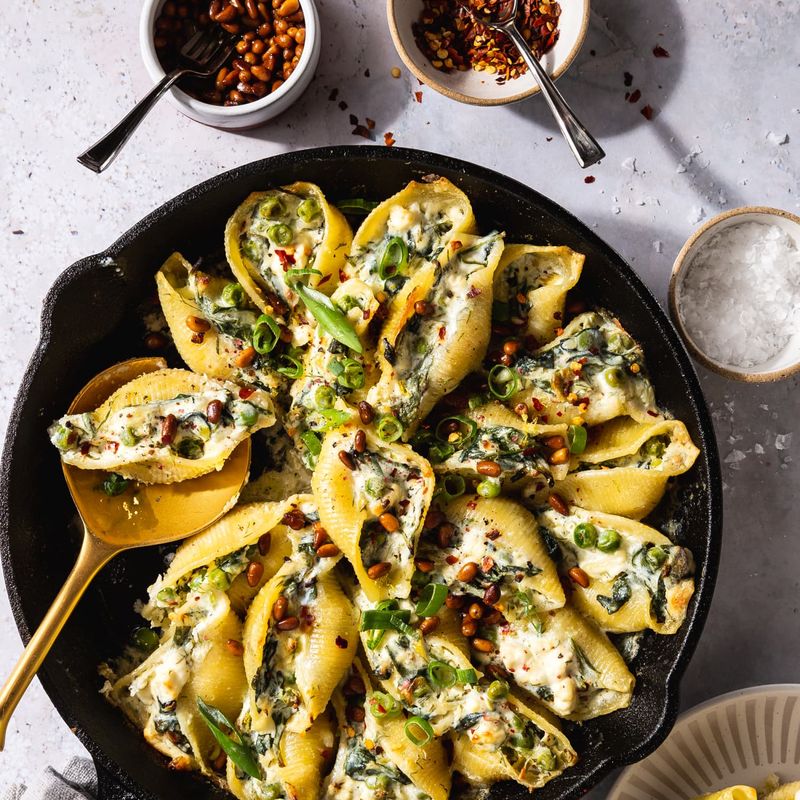
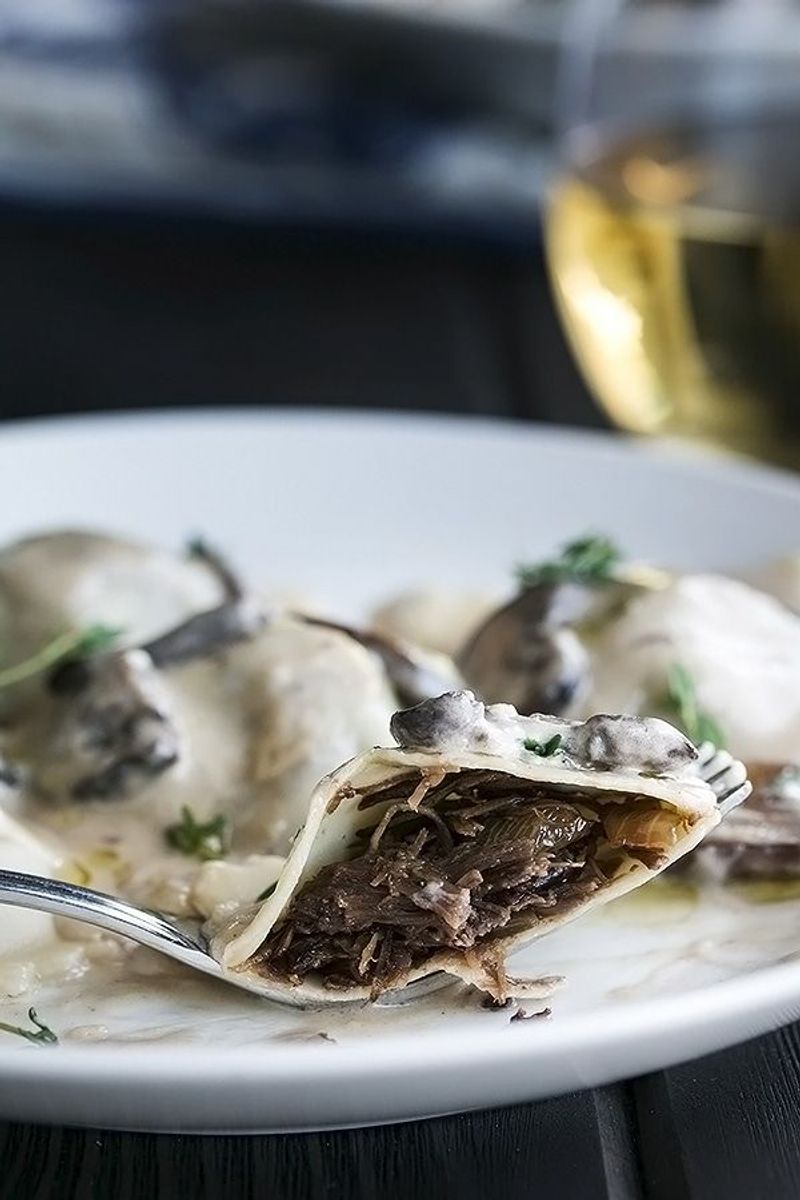
Leave a comment